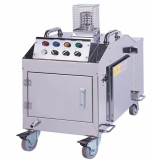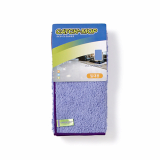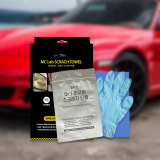Diesel hollow cone nozzle cavitation mechanism inside the hollow cone nozzle diesel internal cavitation is one of the important reasons for the atomization of a liquid jet fuel . Multiphase flow model using Eulerian multiphase fluid method based on VCO -and SAC -type injectors were two dimensional numerical simulation . Comprehensive analysis of the jet factors (including spray pressure , nozzle backpressure , ie cavitation number ) and structural factors ( including spray hole length , outlet diameter , hollow cone spray nozzle orifice clip inlet orifice fillet radius and angle of inclination ) and hole turbulence parameters ( mainly referring to Reynolds and the pressure difference ) to influence the internal orifice flow cavitation characteristics and export traffic.
Most modern diesel engines using high-pressure injectors. For the fuel injection system , the injection pressure , the smaller the scale of the hollow cone nozzle , such that certain regions of the hollow cone nozzle inside of the fuel flow , the fuel flow rate is great, leaving rapidly reduce the fuel pressure here even lower than the local liquid saturation vapor pressure makes the liquid cavitation phenomenon has become a necessity .
After the injection the injector at high pressure acts , the liquid fuel into the combustion chamber space , a field is formed by the liquid column , droplets , oil vapor and the composition of the multiphase mixture of air , i.e. the spray field . Internal pore structure and jet fuel flow characteristics of the injector spray not only determines the quality of fuel spray and combustion chamber with , but also affect the fuel injection characteristics ( injection timing , injection duration, injection rate , etc. ) , these have a direct impact on engine
Diesel hollow cone nozzle cavitation mechanism inside the hollow cone nozzle diesel internal cavitation is one of the important reasons for the atomization of a liquid jet fuel . Multiphase flow model using Eulerian multiphase fluid method based on VCO -and SAC -type injectors were two dimensional numerical simulation . Comprehensive analysis of the jet factors (including spray pressure , nozzle backpressure , ie cavitation number ) and structural factors ( including spray hole length , outlet diameter , hollow cone spray nozzle orifice clip inlet orifice fillet radius and angle of inclination ) and hole turbulence parameters ( mainly referring to Reynolds and the pressure difference ) to influence the internal orifice flow cavitation characteristics and export traffic.
Most modern diesel engines using high-pressure injectors. For the fuel injection system , the injection pressure , the smaller the scale of the hollow cone nozzle , such that certain regions of the hollow cone nozzle inside of the fuel flow , the fuel flow rate is great, leaving rapidly reduce the fuel pressure here even lower than the local liquid saturation vapor pressure makes the liquid cavitation phenomenon has become a necessity .
After the injection the injector at high pressure acts , the liquid fuel into the combustion chamber space , a field is formed by the liquid column , droplets , oil vapor and the composition of the multiphase mixture of air , i.e. the spray field . Internal pore structure and jet fuel flow characteristics of the injector spray not only determines the quality of fuel spray and combustion chamber with , but also affect the fuel injection characteristics ( injection timing , injection duration, injection rate , etc. ) , these have a direct impact on engine
 China
/
China
/

 Australia
Australia
 India
India
 Pakistan
Pakistan
 Philippines
Philippines
 South Korea
South Korea
 U.S.A
U.S.A


































_2.jpg)



